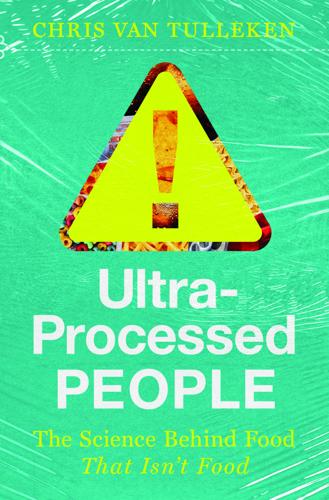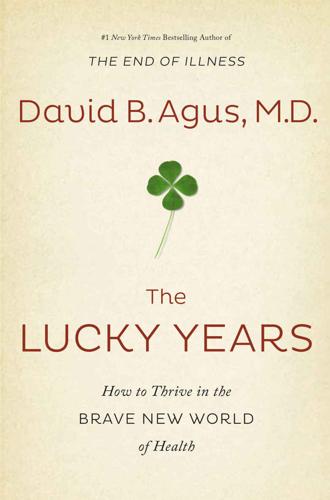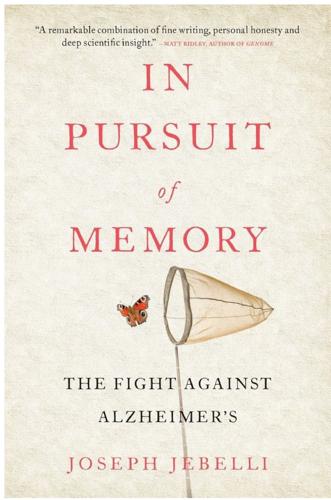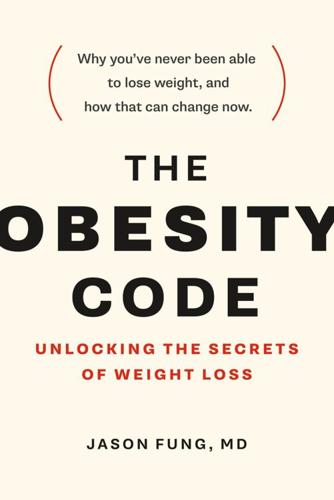parabiotic
description: refers to the joining of two organisms to share circulatory systems, often for scientific research
6 results

Ultra-Processed People: The Science Behind Food That Isn't Food
by
Chris van Tulleken
Published 26 Jun 2023
It didn’t involve great technical skill. He simply removed strips of skin from the flanks of each animal and stitched the rats together. As the wound healed, blood vessels naturally grew from one rat to another so that they became a ‘parabiotic pair’. Grim, yes, but it did allow scientists to tease out the effect of things in the blood. In an early experiment, one rat of a parabiotic pair was fed sugar, while the other wasn’t. Both developed high blood sugar – although only one developed tooth decay, showing that it was sugar in the mouth, not the blood, that rots teeth. In other experiments, old mice were joined to young mice, which extended the life of the older and shortened the life of the younger.† Nearly a century later, in 1959, an English physiologist called G.
…
In other experiments, old mice were joined to young mice, which extended the life of the older and shortened the life of the younger.† Nearly a century later, in 1959, an English physiologist called G. R. Hervey began a series of experiments using the parabiotic pair technique to understand weight control. The study is tough reading. Ninety-three pairs of rats were sewn together, only thirty-two of which survived long enough to be used in the experiment.13 These rats then had a small electric probe inserted into their skulls, which was used to specifically damage a part of the brain called the hypothalamus. If you were to stick a finger directly into your nose and push it through the bone at the back there, you’d end up touching your hypothalamus.
…
The hypothalamus maintains homeostasis in the body, controlling temperature, water intake, how much you sweat and so on. Hervey found that the rats with a damaged hypothalamus lost control of their eating and often developed obesity. So, he started damaging the hypothalamus of just one rat in each parabiotic pair and, if anything, the results got even more horrifying. The rats with the damaged hypothalamus ate so much so quickly that they sometimes died by choking on their food: they were no longer able to detect the ‘stop eating’ signals coming from their bodies. Meanwhile the other rat – entirely normal apart from being attached to the rat with the hypothalamus lesion – started wasting away.

Ageless: The New Science of Getting Older Without Getting Old
by
Andrew Steele
Published 24 Dec 2020
Parabiosis has since been used to study obesity, cancer and even tooth decay – scientists can change some factors for one animal in the pair, while parabiosis makes sure that their internal environment is mostly shared, allowing the effects of the changes to be teased apart. The tooth decay experiment is a neat example. Researchers in the 1950s wanted to work out whether it was sugar’s direct effects in the mouth or its indirect effects in the blood that caused rotten teeth. They turned to parabiosis, feeding one rat in the parabiotic pair a sugary diet and the other normal food. The shared blood supply meant that both rats had equally sugary blood – but only the one actually eating the sugar developed cavities, proving that blood sugar levels aren’t a factor. It may be a bit grisly, but it’s an elegant way to ensure a fair test.
…
The first experiments of this type also took place in the fifties, performed by Clive McCay (the dietary restriction pioneer you will remember from Chapter 3). He and his team conjoined 69 pairs of rats in total, in what now seem like rather primitive procedures with varying degrees of success. Eleven pairs died within weeks of ‘parabiotic disease’, thought to be a consequence of both bodies’ immune systems going to war against the foreign tissue in the other (interestingly, we still don’t know exactly what causes this – but it’s far less common in modern experiments, probably due to improvements in sterile surgical techniques). Other pairings met their end when one rat chewed the head off its partner (modern incarnations allow the animals a couple of weeks in the same cage to get used to each other before attaching them, for both practical and ethical reasons).
…
As we’ve already discussed, much of this is because the stem cells which would normally replenish these tissues slowly decline in function – fewer or less enthusiastic stem cells produce fewer progenitor cells which can go on to replace those damaged or lost in an injury. The same is true of old mice, so the Conboys chose to see what happened to mouse rates of healing in various parabiotic combinations – young-to-young, old-to-old, and old-to-young. Looking at three different tissues – muscle, liver and brain – their results were clear-cut. Old mice attached to young mice healed as well as a young mouse attached to another young one. As proof that it was something to do with signals in the blood reactivating the older mouse’s cells, rather than youthful stem cells helpfully carried by the blood on a rescue mission from the younger partner, they genetically engineered some of the young mice in the experiment so that their cells glowed green.

The Lucky Years: How to Thrive in the Brave New World of Health
by
David B. Agus
Published 29 Dec 2015
And to my partner, best friend, and wife, Amy: Your love and support inspire me daily. I am so excited and privileged to continue to enjoy the Lucky Years with you . . . . . . most men and women will grow up to love their servitude and will never dream of revolution. —Aldous Huxley, Brave New World (1932) List of Illustrations Page 3: Parabiotic mice. Courtesy of author. Page 7: Inflection point curve. Courtesy of author. Page 28: Photo of Dr. William Coley. Public domain. Page 31: Brain scans of tumor shrinking using polio virus. Images courtesy of the Preston Robert Tisch Brain Tumor Center at Duke University. Used with permission.
…
This procedure activates dormant stem cells in the older mouse, which turns back the clock and allows the stem cells to restore function to tissues. Stem cells are mother cells with the potential to become any type of cell in the body—from those that allow your heart to beat to brain cells that make you smart—and that also have the power to renew themselves or multiply. The surprising conclusion drawn from this recent parabiotic research is that the secret to reversing aging organs is lying asleep inside each of us! Future research will figure out how exactly this age-reversal phenomenon works. In almost every tissue examined, including those of the heart, brain, and muscles, the blood of juvenile mice seems to “zap” new life into aging organs by awakening the sleeping stem cells through infusing substances normally associated with youth—proteins and growth factors that are particularly prominent in young blood but not old.

In Pursuit of Memory: The Fight Against Alzheimer's
by
Joseph Jebelli
Published 30 Oct 2017
Weissman had spent decades studying examples of parabiosis in nature and was fascinated by a sea-dwelling creature called the Star Ascidian (which reproduces as a bud, grows off its parent, and remains joined to it until the parent eventually dies and is reabsorbed by the offspring). When Wagers expressed an interest in exploring the movement of circulating blood stem cells, Weissman advised her to use parabiotic mice. She pursued the work at Harvard, where she established her own laboratory in May 2004. Back at Stanford, word spread of the spooky method Wagers was employing for her experiments, and it wasn’t long before researchers interested in the biology of ageing, led by a neurologist called Thomas Rando, asked her to work alongside them.

The Obesity Code: Unlocking the Secrets of Weight Loss
by
Jason Fung
Published 3 Mar 2016
Leibel RL et al. Changes in energy expenditure resulting from altered body weight. N Engl J Med. 1995 Mar 9; 332(10);621–8. 11. Lustig R. Hypothalamic obesity: causes, consequences, treatment. Pediatr Endocrinol Rev. 2008 Dec; 6(2):220–7. 12. Hervey GR. The effects of lesions in the hypothalamus in parabiotic rat. J Physiol. 1959 Mar 3; 145(2):336–52.3. 13. Heymsfield SB et al. Leptin for weight loss in obese and lean adults: a randomized, controlled, dose-escalation trial. JAMA. 1999 Oct 27; 282(16):1568–75. Chapter 6: A New Hope 1. Tentolouris N, Pavlatos S, Kokkinos A, Perrea D, Pagoni S, Katsilambros N.

The Matter of the Heart: A History of the Heart in Eleven Operations
by
Thomas Morris
Published 31 May 2017
Medawar, ‘The behaviour and fate of skin autografts and skin homografts in rabbits: A report to the War Wounds Committee of the Medical Research Council’, Journal of Anatomy 78, Pt 5 (1944), 176–99 18. Demikhov, op. cit., 179–86 19. ibid., 162–4 20. ibid., 69 21. ibid., 126–7 22. ibid., 125–6 23. Emanuel Marcus et al., ‘Homologous heart grafts: I. Technique of interim parabiotic perfusion; II. Transplantation of the heart in dogs’, Archives of Surgery 66, no. 2 (1953), 179–91 24. William S. Stoney, ‘Interview with Norman E. Shumway’, in Pioneers of Cardiac Surgery (ed. William S. Stoney; Nashville, TN: Vanderbilt University Press, 2008), 427–39 25. M. H. Cass and R. Brock, ‘Heart excision and replacement’, Guy’s Hospital Reports 108 (1959), 285–90 26.